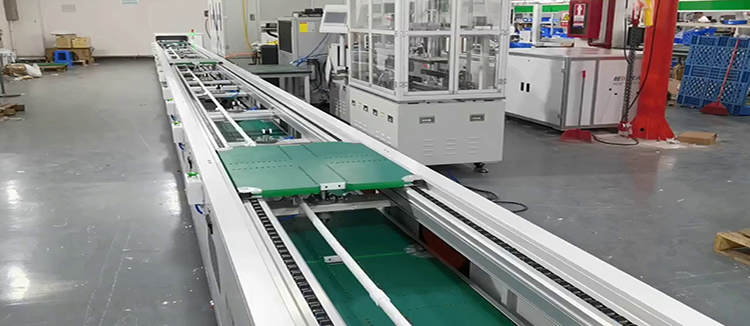Unveiling the Power of Industrial Robots: Revolutionizing Automation in the Modern Era
Industrial robots have become a cornerstone of modern manufacturing, offering unprecedented levels of precision, efficiency, and productivity. These sophisticated machines are designed to perform tasks that are repetitive, dangerous, or beyond human capabilities, thereby transforming the way industries operate. In this article, we will delve into the world of industrial robots, exploring their capabilities, applications, and the impact they have on the global economy.
The term "industrial robot" refers to programmable, multifunctional manipulators designed to move materials, parts, tools, or specialized devices through variable programmed motions for the performance of a variety of tasks. These robots are not mere machines; they are the embodiment of cutting-edge technology, capable of learning, adapting, and improving over time. The integration of artificial intelligence and advanced sensors has made industrial robots more versatile and intelligent, enabling them to work alongside humans in a safe and efficient manner.
One of the primary applications of industrial robots is in the automotive industry, where they are used for tasks such as welding, painting, and assembly. The precision and speed of these robots have significantly reduced production times and improved the quality of vehicles. Moreover, the use of industrial robots in this sector has led to a reduction in workplace accidents, as they can handle hazardous tasks that would otherwise pose a risk to human workers.

Beyond the automotive industry, industrial robots are also making their mark in sectors such as electronics, aerospace, and pharmaceuticals. In electronics manufacturing, they are used for component placement, soldering, and testing, ensuring that products meet the highest standards of quality and reliability. In aerospace, industrial robots are employed for tasks such as riveting and drilling, where precision is critical for the safety and performance of aircraft. In the pharmaceutical industry, they are used for tasks like filling and sealing, which require a high degree of accuracy and cleanliness.

The benefits of industrial robots extend beyond just efficiency and safety. They also contribute to cost savings for businesses. By automating repetitive tasks, companies can reduce labor costs and increase their output. Additionally, the use of industrial robots can lead to a more consistent product quality, as these machines are less prone to human error. This consistency is particularly important in industries where precision is paramount, such as in the production of medical devices or high-tech components.
As the technology behind industrial robots continues to advance, their capabilities are expanding. Collaborative robots, or "cobots," are a new breed of industrial robots designed to work in close proximity with humans. These robots are programmed to be safe and intuitive, allowing them to be easily integrated into existing workflows without the need for extensive safety measures. The rise of cobots is a testament to the evolving nature of industrial robots and their ability to adapt to the changing needs of the workforce.
The future of industrial robots is promising, with advancements in areas such as machine learning, computer vision, and sensor technology. These developments will enable industrial robots to become even more autonomous, intelligent, and capable of handling a wider range of tasks. As a result, the role of industrial robots in the global economy is set to grow, with estimates suggesting that the market for industrial robots will continue to expand at a rapid pace.
In conclusion, industrial robots are not just machines; they are the driving force behind a new era of automation and innovation. Their ability to perform complex tasks with precision and efficiency has revolutionized industries worldwide. As technology continues to evolve, the capabilities of industrial robots will only grow, further solidifying their place as a vital component of the modern manufacturing landscape.










